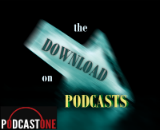 At a recent International Advertising Association (IAA) conference in Australia hosted by Nova Entertainment, that group’s head of creative services warned that programmatic advertising kill podcasting. “If you just buy the best CPM available and stick it in there, you lose contextualisation and then podcasts become dead,” said Andy Milne.
At a recent International Advertising Association (IAA) conference in Australia hosted by Nova Entertainment, that group’s head of creative services warned that programmatic advertising kill podcasting. “If you just buy the best CPM available and stick it in there, you lose contextualisation and then podcasts become dead,” said Andy Milne.
That’s dire. Let’s back up a little. In the podcast resurgence of the last two years (which could be called the post-Serial era), direct response (DR) advertising has lifted the on-demand category to new monetization heights. We’ve heard off-the-record reports of $80 CPMs for host-read promotions, often purchased by online service companies that can verify effectiveness with coded visits by program listeners. The best of these leverage podcasting’s famous trust factor of a beloved host evangelizing a product or service to a loyal audience.
Programmatic advertising is traditionally an impersonal campaign format, so the idea that it could skewer podcasting’s growing success is understandable. Anytime context is lost, there could be loss of effectiveness. But there are a few points to argue against a gloomy prediction when it comes to automation entering podcast buying.
Host-Read Is Not Necessarily Live-Read
First, a host-read sponsorship message doesn’t have to be a live read. You might assume they always are, but Sean Carr, co-founder of the recently launched podcast monetization platform ART19, says that is not generally true. “Almost always the hosts are recording them to get the take right. Occasionally they will do a live read inside the show, but that is unusual. The vast majority of producers are actually recording them separately.”
That’s an interesting insight, and leads the way to effective host reads injected into programs based on a key programmatic value — serving the right ads to the right people at the right times.
Real-Time Ad Injection
Ad injection, which is offered by ad-tech giants like Triton Digital, AdsWizz, and WideOrbit, in addition to a growing number of podcast-specific platforms, is central to programmatic delivery (not all ad injection is programmatic, but all programmatic ads are injected). Ad injection solves a problem in podcasting, which might be termed ad staleness. Some leading podcasts have back catalogs hundreds of shows deep. To some extent, in some shows, those catalogs are evergreen, and receive deep-dive traffic from fans prowling into the history of their favorite shows. Think of Marc Maron’s interview of President Obama as a landmark back-catalog piece of content.
Ad injection happens at the server call — when a listener clicks a Play or Download button. Without ad injection, that person hears whatever ads were baked into the show when it was released, no matter how out-of-date and un-contextualized they are in the present. With ad injection, the ads are current and relevant, no matter how old the show.
Seeking The Big Brands
Then there is the question of brand advertising, which is eyeing the podcast opportunity with interest, caution, and some mystification. Interest, because brand advertisers hear all the noise and know that DR marketers are paying eye-opening CPMs. Caution, because decisions of how to deploy huge branding budgets are made slowly when it comes to new mediums. Mystification, because there is no standard of audience measurement applied across a fragmented landscape of distribution networks.
Brand advertisers expect buying platforms with certain key values: Ease of purchase, broad deployment, audience targeting, and smart impressions — the last one being key. Advertisers will pay more for smart impressions — that ideal match-up of message and receptive consumer. For some observers, programmatic advertising represents a “race to the bottom,” where prices plummet along with effectiveness. That reputation derives largely from programmatic display advertising on websites, which is increasingly ignored or blocked by consumers.
Podcasting has the means to avoid that pitfall. Audio is inherently more commanding of attention than display banners. Contextualization is built-in, to some extent in some shows, based on program topicality and the muscular loyalty of fans to their shows and hosts. The fact that host-read endorsement can be pre-recorded and injected builds in a remarkable equation of personality and targeting, with an element of native advertising in some cases.
Premium Endures
Finally, premium is always premium. The most successful content brands and networks will always be able to sustain human-powered premium-sold advertising efforts, and be rewarded with premium prices. Web display is awash with low-cost programmatic, but high-flying premium networks like Vox Media sell directly to big brands which seek affiliation with the publisher along with large audience reach. Same thing with audio giants like Pandora, Spotify, and iHeartMedia. In podcasting, all the major networks engage in hand-to-hand selling — PodcastOne (which sponsors this column) has sales offices in several major U.S. markets.
The upshot is that modern media buying technology will inevitably come to podcasting, and that has already started. The category as a whole will be lifted when the largest and most sophisticated buying agencies gain trust that they can buy in a streamlined fashion, target audiences, and inject their messages with precision throughout entire program catalogs.

Thanks for sharing